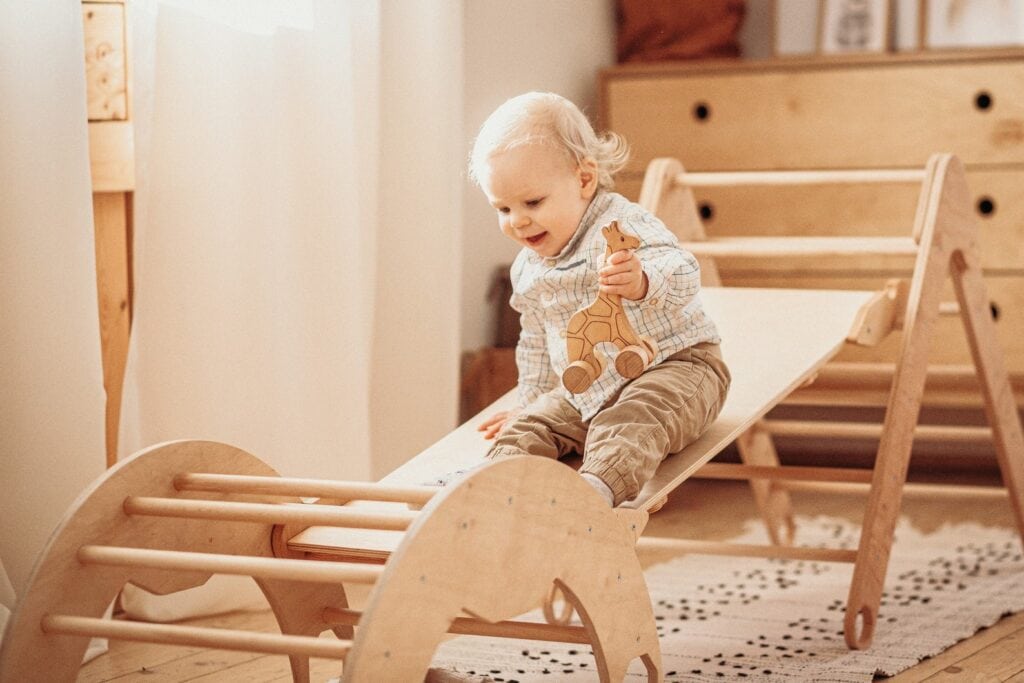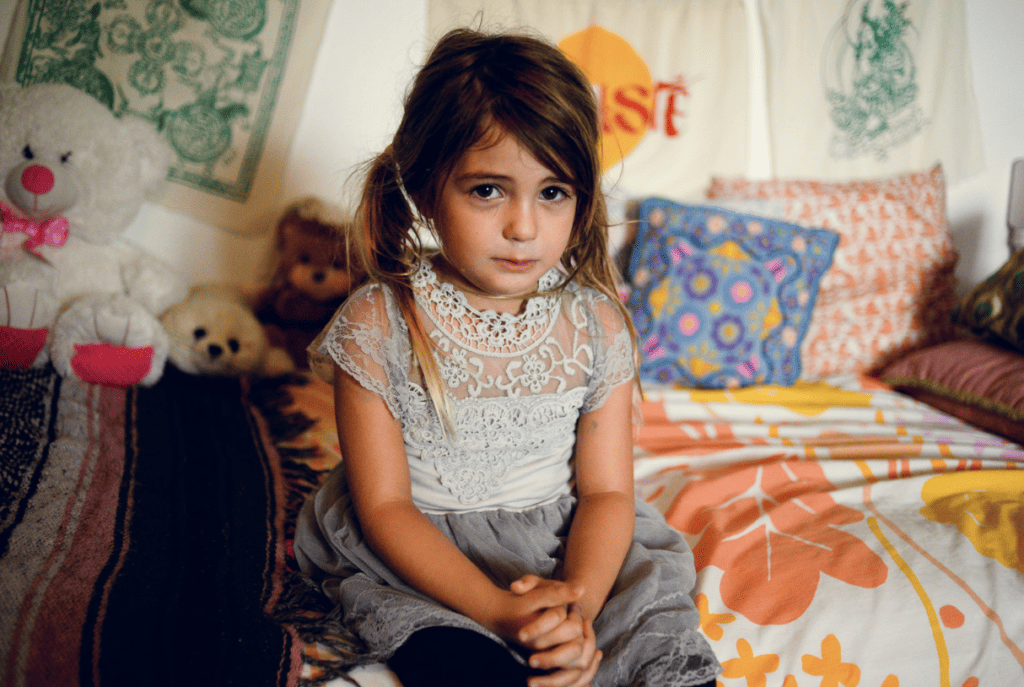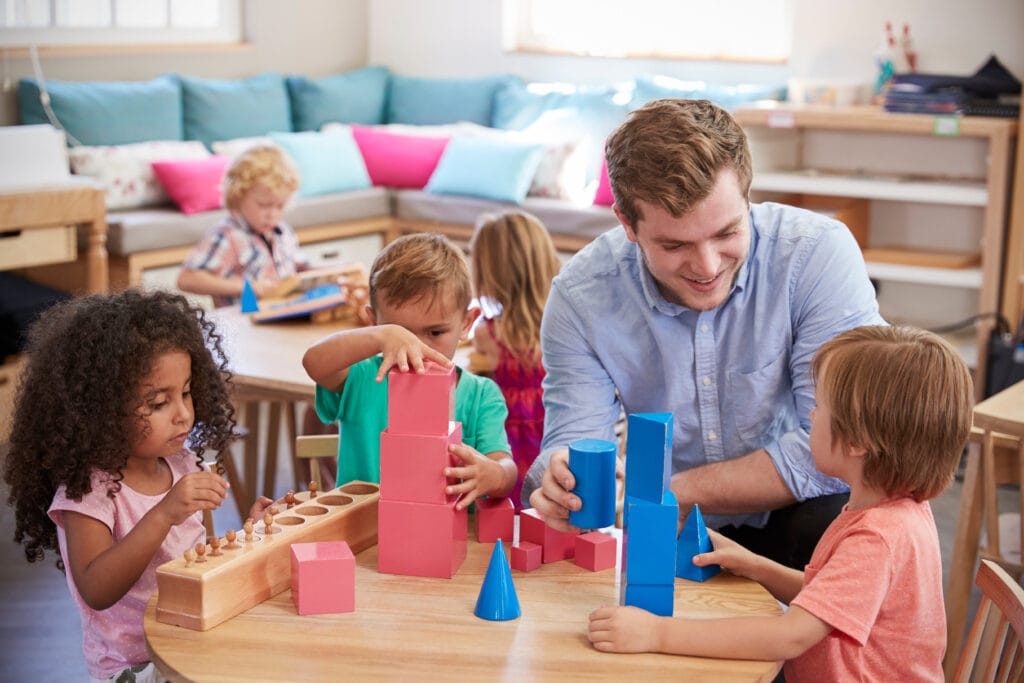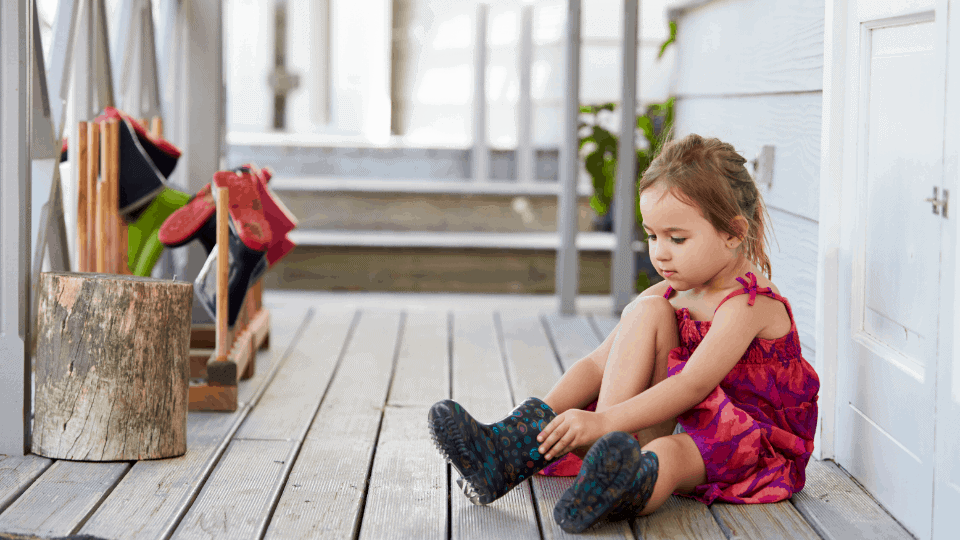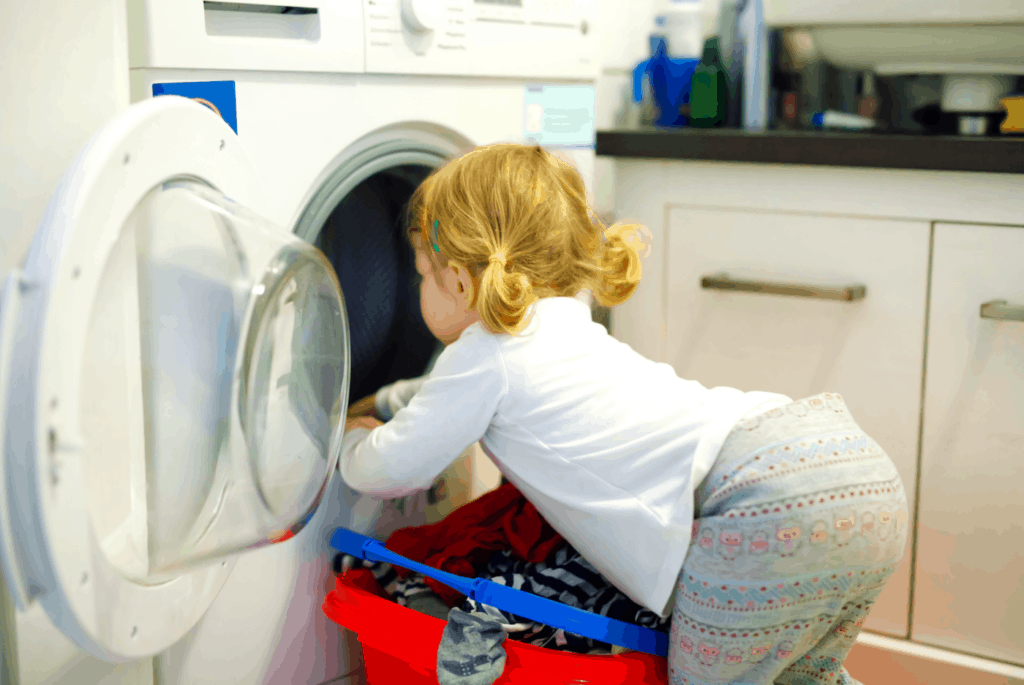The
(Source: amshq.com)
Montessori for infants is the easiest level to maintain for the
- Peaceful Environments
- Routines
- Communication skills
- Body Autonomy
- Trust
These things are the basis for every other stage and developmental milestone they will achieve in their lifetime.
While the Montessori Method has many specific guidelines and recommendations, you can choose to use more or less of the guidelines depending on what works with your family. However, the earlier you start implementing the method, the greater impacts you will see in your child as early as a few months old! You would be surprised at how many languages and environmental impacts have on an infant only a few weeks old.

What is Montessori for Babies/Infants?
Most people are unaware that you can start
- Explaining to them what is happening next – “We are going to see Daddy for lunch”
- Explaining your next movements – “I’m going to change your diaper”
- Recognize and call out sounds and colors they can see and hear – “Do you hear the fire truck?” or “Can you see the blue ball?”
- Explain processes through their entirety, like bedtime or nap time routines.
Explaining these processes and informing them of things means they are already absorbing daily routines, associating names with people, and certain environments with certain events. This helps your infant with the ability to prepare for things and have fewer moments of overstimulation within their day.
Your baby will also learn by watching and interacting with things in its environment. While you go about daily life and do things that seem mundane to you, your infant will be experiencing these things for the first time and trying to figure out exactly how to process it all. While you do your daily activities, you can involve your infant by explaining the process and simply showing them different things that you are working with.
While it seems like they won’t get much from this involvement, it is so crucial to their development to be able to be involved in tasks and activities. Even if all they learn and absorb is a more emotional and mental connection with their parents or caretakers, that is a huge part of learning for an infant.
Why is Montessori Beneficial for Your Baby?
The biggest intent behind the
The most important things a baby learns their first year are:
- Their environment and learning how to interact with it
- Their body and how to control it
- Trust in those who take care of them
- Security in their environment
The way you should set up your baby’s nursery will allow them to learn at their own pace without overstimulating or limiting their ability to discover something new. Making sure the child feels like their room is a space solely for them is a large part of allowing them to explore and learn on their own. You can achieve a kid-friendly space by putting the mattress on the floor, hanging wall art on their level, and giving them child-sized furniture.
(Source: Chesapeake Montessori School)

How to Set Up a Montessori Nursery
When setting up your nursery, there are a few key aspects that are the difference between a normal nursery, and a
- A floor bed. This allows your child to get in and out of bed as often as they like, while also having the ability to explore their room. This fosters independence which is key in a
Montessori bedroom. - The room needs to be a child-sized space. You want low shelves, low hanging pictures, and mirrors, small tables, and chairs as well as wardrobes without doors and drawers. Your child can fully explore a room set-up like this without any smashed fingers, or risky climbing issues.
- Simplicity is what you want to aim for in every aspect. Sharp contrasting colors like black and white, limited wall hangings, a small number of simple toys. This allows for exploration without overstimulation.
- Intentionally define the difference between the play and sleep area in the bedroom. They need to be on separate sides of the room.

Furniture and Toys for a Montessori Nursery
When putting together the nursery, you really want to focus on making the room a place that your child will be able to play and grow in without you present all of the time. You will need a heavy presence of safety to make sure they can’t get hurt.
One way to do this is to intentionally make the furniture their size. If the chair and table are more accessible to them, they will desire to climb on them less and use them in the right way.
When you hang photos and mirrors where they can touch them, not only does it allow for sensory play, but it also discourages the idea of needing to climb or reach for things they cannot have. You will simply be allowing them to have very limited boundaries in their room, which will be great for learning independence.
It is very easy to find furniture that captures the essence of the Montessori Method, especially in the children’s younger years. While your infant won’t need much in the first few weeks, after a few months, they will start to venture more around their room. Starting off with a complete nursery allows your infant to familiarize themselves with everything and intentionally interact with certain items.
| Furniture | Features | Price range |
| Montessori Style Floor bed | Allows for independence and good sleep habits. | $130-$195 |
| Chair and Table Set | Provides a child-sized place to sit. Provides something to try and pull up on that is not dangerous or too tall and heavy. | $100-$180 |
| Toddler Toy Storage with Mirror | Gives storage space and a mirror. No hanging necessary. | $100-$200 |
Having clothes, books, and toys out in the open where they are easily reached is a great way to promote self-starter habits. They may “play” with their clothes at first, but eventually, it will turn into them learning how to dress. While they don’t know how to read yet, just having the books to grab and choose will be a great sensory activity, and eventually, turn into a fantastic relationship with reading.
The biggest goal when setting up a nursery is to make it accessible to your baby, even if you are not in it with them. Fostering independence and allowing them to interact with their environment without the influence of someone else is how they learn to think independently.
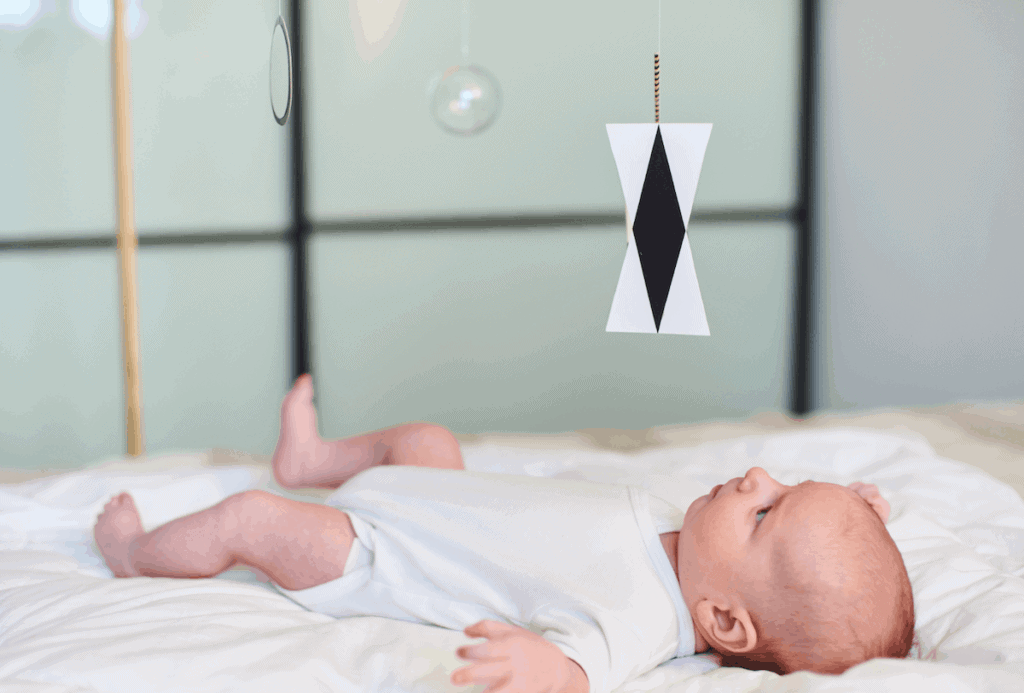
If you think that toys are not crucial for your infant in the beginning, you wouldn’t be wrong. However, infants develop and change so quickly that in 6-8 weeks, they will be able to notice and focus on a toy for a few seconds. Having something that they are trying to touch or grab can help with hand-eye coordination and body control. Some toys that you can get for your infant are:
| Toys | Features | Price Range |
| Minimalist Mobile | Sharp contrast that attracts your child gaze. So simple, it goes with any nursery style. | $12-$40 |
| Wooden Baby Gym | Simple toy. Will not overstimulate. Fits with most decor. | $45-$60 |
| Wooden Baby Toys | Simple wooden toys for your infant that won’t overstimulate. | $20-$30 |
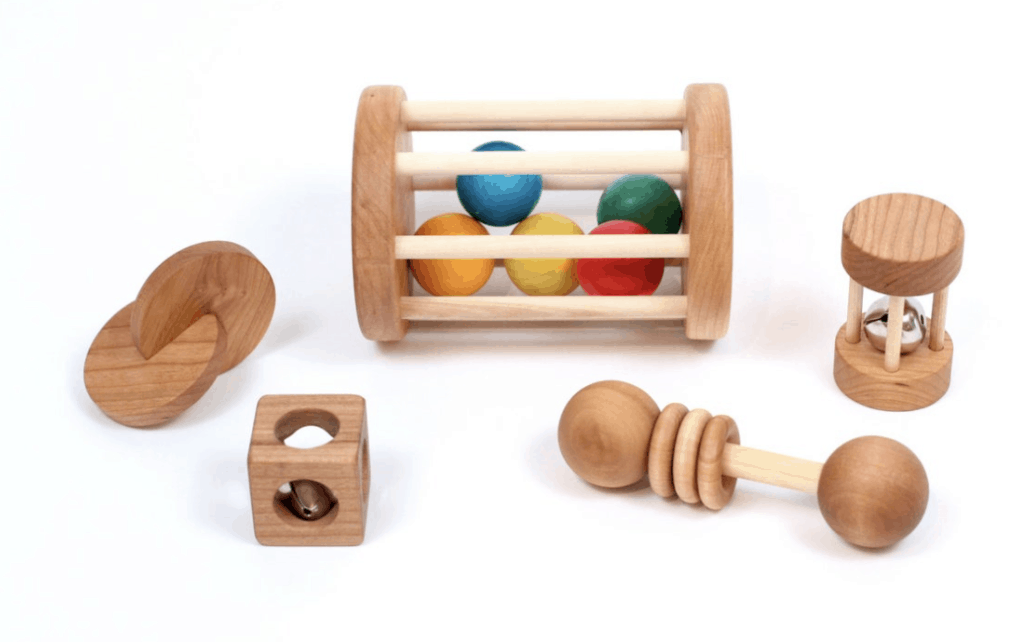
(Source: Motherly)
Obviously, you can ultimately decide what is best for your child and what works for your space. However, making sure that the environment is fostering independence while also maintaining a positive atmosphere is the overall goal of a
Simplicity and functionality are good things to keep in mind. This helps your infant not feel overwhelmed and the room from being cluttered. This means that their room is the best place for your child to interact and develop.
Related: Montessori Mobiles: Why, When, and How to Use Them
Montessori Materials and Activities for Your Infant
While your infant can not specifically follow through with complicated or advanced activities as a toddler can, you can still do a wide variety of things to foster your infant’s senses and help them have sensory play.
Montessori Activities For Your Infant
Setting up a nursery through the
| Product | Features | Products that Help |
| Tummy Time | Helps with neck muscles development. Allows infants to see everything in a different way. | Cloth Play Gym |
| Motor Skills Work | Simply helps with motor skills. Helps develop intentional grasping and reaching. | Wooden Rattle Teethers |
| The Sound Game | Helps infant learn how to use their voice. | Parents making simple vowel sounds for the baby to copy |
| The Color Game | Helps your infant be introduced to colors while hearing names. Can instill an early recognition of colors. | Stacking Toys Ribbon Ring |
Montessori Routine for Your Baby
The
| Time | Activity |
| Wake-up – 9 am | Breakfast. Structured playtime/tummy time |
| 9-11:30 | Snack. Nap. Outside time. Playdates |
| 11:30 | Lunchtime |
| 12-2 | Possible second nap. First rest time |
| 2-2:30 | Snack Time |
| 2:30-5 | Tummy time. Outside Playdates. Structured singing and dancing. |
| 5-8 | Dinner time. Quiet play or reading. Bedtime |
While you may have to adjust sometimes and have an extra nap here and there, this can help you stick to a routine your infant can become adjusted to and expect. This makes for better days when your infant is fussier or unsettled because it will bring some calm and structure to their day.
If you choose to use daycare, most
While sticking to a routine is very important, it is also important to not miss out on life and big activities due to a rigid schedule. While it can cause an upset infant, or just a moment of frustration, being involved in family gatherings, or experiences that may not happen every day gives your infant a chance to experience and learn something new, even if it is just how to manage without sticking to a routine for one day.
Also, as your infant grows and their needs, sleep and desires change, so will your schedule. If you need to shift your routine in a large way, it is recommended that you start moving things in 10-15-minute increments each day to reduce the risk of frustration to your infant.
For example, if you need to shift lunch and nap time down an hour, doing that all on one day will lead to a very hungry and overtired baby that may not be able to be calmed down, or made happy for quite a while.
(Source: Montessori Academy, Springs Montessori)

Montessori Parenting Style Tips
While the
- Emotional Safety
- Mental Security
- Self-confidence
- Independence
One great way to make sure these things are well cultivated is to focus on your parenting style and really allow yourself to step back and watch your child do hard things. You can rest in the knowledge that allowing your child to learn independence will mean later in their life, they will need you less and less because of things you taught them earlier in life.
While this is a bittersweet realization, it is the natural movement of things, and you will be thankful that you won’t have to change diapers, wipe bottoms or cut up food for your child forever.
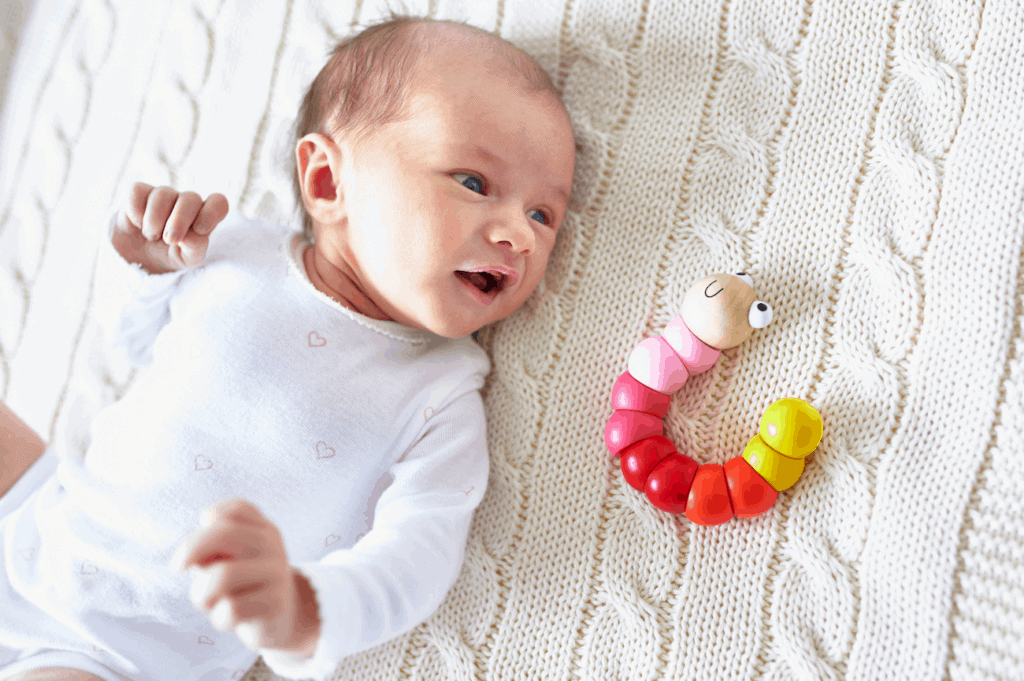
Use Rich Language and Real Words
A lot of us have a specific voice and language we each use when we talk to babies. In reality, there is nothing wrong with this, however, sometimes it can become a hurdle to overcome as your child grows and begins hearing different languages and tones.
When we are talking to, or around, an infant, we need to be heavily focusing on our language to allow for a vast vocabulary that our babies absorb. Some examples of what we shouldn’t say are:
- “Do you see a wittle doggie?”
- “Does your tummy-wummy hurt?”
- “Are you sleepy-weepy?”
While these may sound very cute and goofy, oftentimes, they are vocabulary that we cling on to, even as our children grow, which means eventually, our children have to unlearn these bad habits.
Even if your baby cannot respond or completely understand, they are still absorbing so much information from your words, expressions, and tones. Some examples of things you can say to your baby, in a soft, loving, tone are:
- “I’m so sorry your belly hurts, did you eat too much?”
- “Do you see that brown and white dog? Is it so soft?”
- “I know you are sleepy. When you wake up you will feel stronger and much happier.”
These simple phrases start cultivating the way your infant will view certain things. The earlier you begin to help shape their view of the world, the better and easier they will be able to grow and understand it.

Support Independent Play
As a parent, you undoubtedly want to be on the floor with your child or holding them often. Physical touch and involvement is absolutely crucial to your infant’s development because this is how they learn safety and security. However, doing this every time they are awake means they will learn to expect it, and can get pretty upset if you aren’t there.
If you allow your child to have some freedom in their playtime, they will learn how to entertain themselves and use their imagination. Independent play is something they have to learn through being left alone with toys for short periods of time.
Now, being left alone can simply mean you are on the couch while they are on the floor, or you are making dinner while they are in the pack and play. Some parents put baby monitors in the infant’s room, lay them down and walk out with the screen so they can see them.
No matter how you choose to cultivate independent play, it will benefit your child, while also allowing you some time to get a few things done throughout the day.
Allow Freedom of Movement
When planning how you are going to set up the spaces your child will be most often, focus on freedom of movement and how that relates to where you place things. You want your child to be able to move around as much as possible without too many frustrating obstacles.
When your infant begins rolling, that’s all they can do! They can’t scoot down or up very well, and they will roll into everything that gets in their way.
However, if your child is rolling towards something, it’s probably because they want to touch it. The less obstacles you have in the room, the better freedom your infant will have, therefore they will be able to independently interact with their environment so much better.
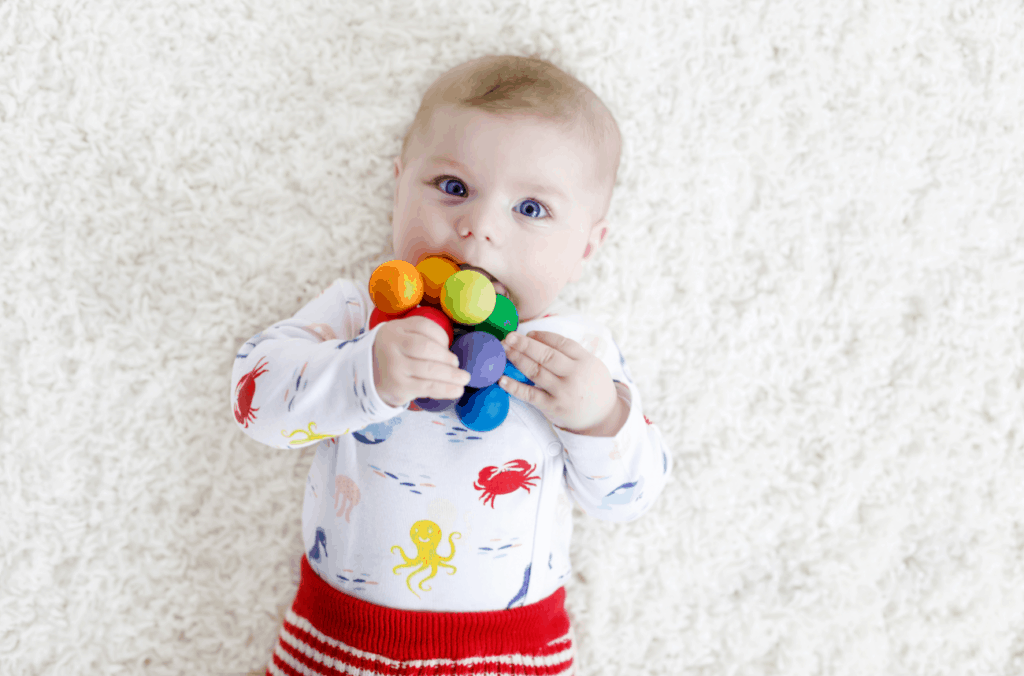
Try and Keep a Normal Routine
If you are not a huge routine person before you have a baby, it is recommended that you try and become one after you have your baby. Babies thrive on routine and structure and while it can be frustrating to you sometimes, they will be happier and less stressed because of it.
The more you stick to your routine and schedule for your infant, the quicker they will be able to expect what the next day, hour, or minute looks like, therefore mentally being able to prepare for things.
Naptime and bedtime routines are the best examples of why schedules are important. If your infant is used to going to sleep at 12, 3 and 8 each day, then their bodies will begin to get sleepy just before those times, so you have an easier time putting them to sleep. When you have a calm, quiet environment, coupled with an on-time nap, you have a baby that will fight less, and sleep more.
Now, if you were to take the alternate route and not keep a constant schedule for your infant, then planning your day around naps, very likely won’t happen. Neither will consistent bedtimes, planned naptime meetings, or phone calls. You also will have babies who are tired much more randomly throughout the day and you will have to guess at what it is they want or need instead of just knowing it is bedtime.

Keep Them Involved
While it can be easier to have someone watch your baby while you run errands, go to the grocery store or clean the house, it is better for your baby to be involved every step of the way. Watching and interacting with you while you go through daily life can be so educational for your baby, and it allows them to learn how to have security while not always having your undivided attention.
While you are cleaning the house, simply take your baby from room to room with you and talk through what you are doing. When you go to the grocery store, name the things you pick up, and explain where you are and why.
Keeping a steady stream of information and conversation going with your infant may sound silly or pointless, but even if it is just hearing your voice that keeps them calm, or if they learn what each room’s purpose is in your house, they learned it from being with you.
Confirmation Bias Theory
There is a theory that suggests the first time we hear something, our minds make it the basis for everything we read, hear or learn after that. For example, if you were told as a baby that the sky was green, and in kindergarten, they told you the sky was blue, you would be conflicted given the fact that your previous truth was that the sky was green.
While the
The earlier you introduce your infant to rich, real, descriptive language, the earlier they can begin to understand and use it themselves. Furthermore, whatever basis you want your child to grow up on, the earlier you teach it to them, the more set in stone it will be throughout their life.
While this is not a concrete science that says once you hear something once, your mind will never change, it is understood that it is harder to change someone’s opinions or thoughts about something if they already believe they know the truth.
(Source: Facts Don’t change your Mind)
Wrapping up Montessori
Starting the Montessori method is best done as early as you can to promote the most independence and free-thinking skills. While an infant seems like they aren’t learning much from the environment they are in, the
Calming environments, with sharp contrasting colors and safe areas to explore, are the three best ways to allow your infant to get the most out of their nursery. You want to stimulate their desire to learn and interact, which can lead to a long life of self-discovery and self-led learning.


